Dungeons and Dragons’ Best Monsters and Villains Ever
Demons, dragons, deadly jello, deceptive chests, and all the other Dungeons and Dragons monsters and villains that rolled us into an early grave.
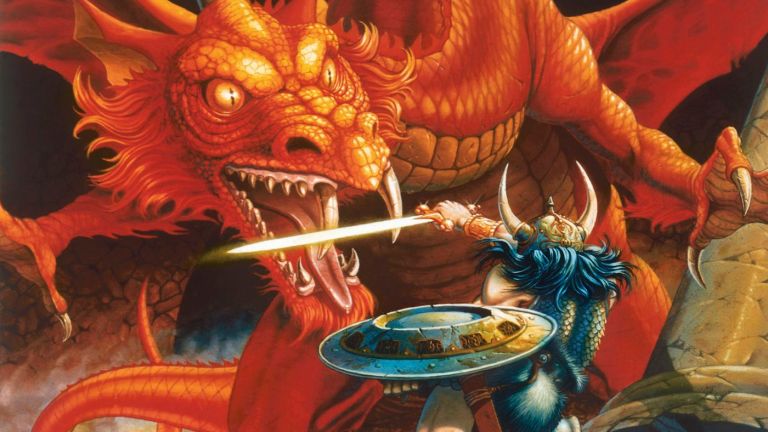
The Dungeons & Dragons universe spans vast underground realms, impossible outer planes, and kingdoms as beautiful or corrupt as you can imagine. It’s fertile ground for our imaginations, where player characters can overcome almost any plot or puzzle your dungeon master can throw at you.
But along the way, there are many dangers to face. Some are almost indescribably terrible hordes of monsters led by something insensate and terrible. Other times, your campaign leaves you face-to-face with a legendary villain that looms over your adventure and, more often than not, shapes its ending.
There are thousands of beasts and baddies for a dungeon master to pick from when setting up a campaign, but we’re going to introduce you to fifteen of the biggest, baddest, and coolest dangers you’ll ever have the misfortune of meeting during your D&D campaign. No dice necessary; just bring your imagination along for the ride.
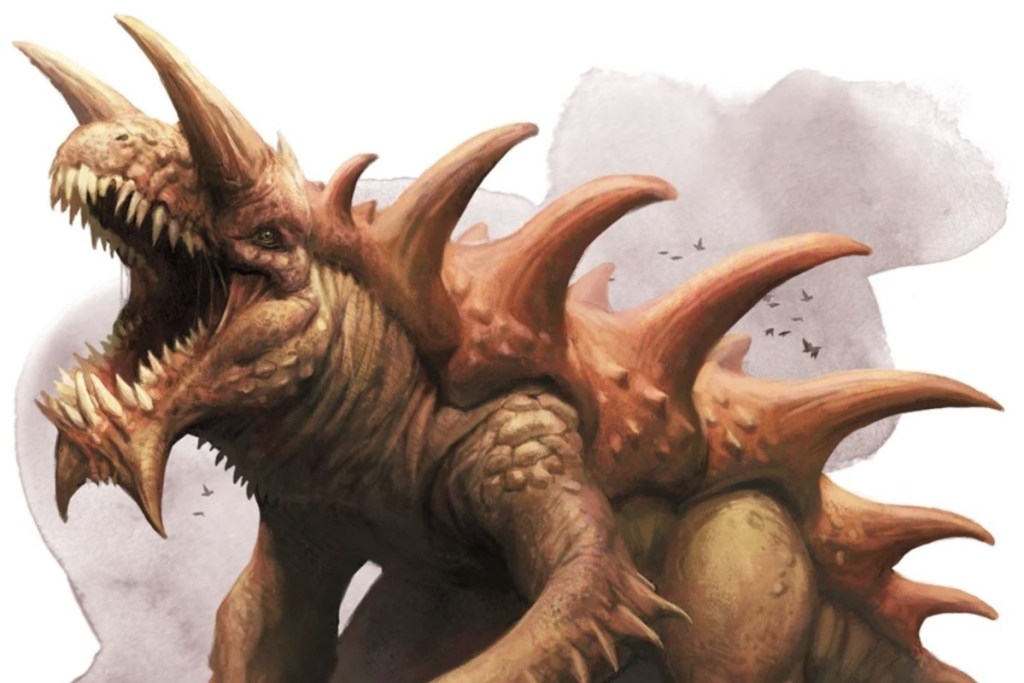
Tarrasque
Want to see if you can literally scare the shit out of a veteran D&D player? Tell them the next campaign they play is going to have a Tarrasque hidden in it. Pronounced taah-rask (roughly), Tarrasque is a cool-sounding name for one of the hardiest monsters to exist anywhere in the Forgotten Realms.
Mind you, a Tarrasque isn’t a god. It’s not even particularly intelligent. It’s a lizard-like creature of titanic proportions, armored with a thick carapace that’ll slow down almost any party of adventurers. Like Dune’s sandworms, it’s a force of nature that rises out of its slumber only to destroy everything around it. It’s so difficult to fight that it’s never been featured in a major video game or even a tie-in novel. It exists as an “oh crap” device; a Godzilla-level terror that only the luckiest and most prepared parties can hope to defeat. Even then, they probably won’t. The lore of the Forgotten Realms goes so far as to suggest that there’s only one Tarrasque alive at any time, and it may even be a weapon left behind by old gods.

Mind Flayers (Illithids)
The Mind Flayer is one of D&D’s core monsters. It’s a recognizable monstrosity that appears throughout the franchise multiverse, including the sci-fi-themed Spelljammer setting. Intelligent, telepathic spellcasters with rubbery, octopus-like features, their design was clearly inspired by H.P. Lovecraft’s work. Actually,m Gary Gygax was reading a Brian Lumley novel and came up with Mind Flayers on the spot.
Mind Flayers’ lore also borrows from Lovecraft’s Mi-Go and the Mi-Go brain cylinders. Mind Flayers even have a ruling class of Elder Brains that are kept safe within their secret cities. Their in-universe origins are filled with troubling uncertainties. They’re either alien refugees from a future they’ve forgotten, or some terrible evolution now scattered through time and space. There’s at least one citadel of the Mind Flayers in Faerun, Oryndoll, deep in the Underdark. As an enemy, they’re horrifying brain suckers that require skill to defeat. As a species, they’re a fascinating look at some of the darkest corners of D&D lore.
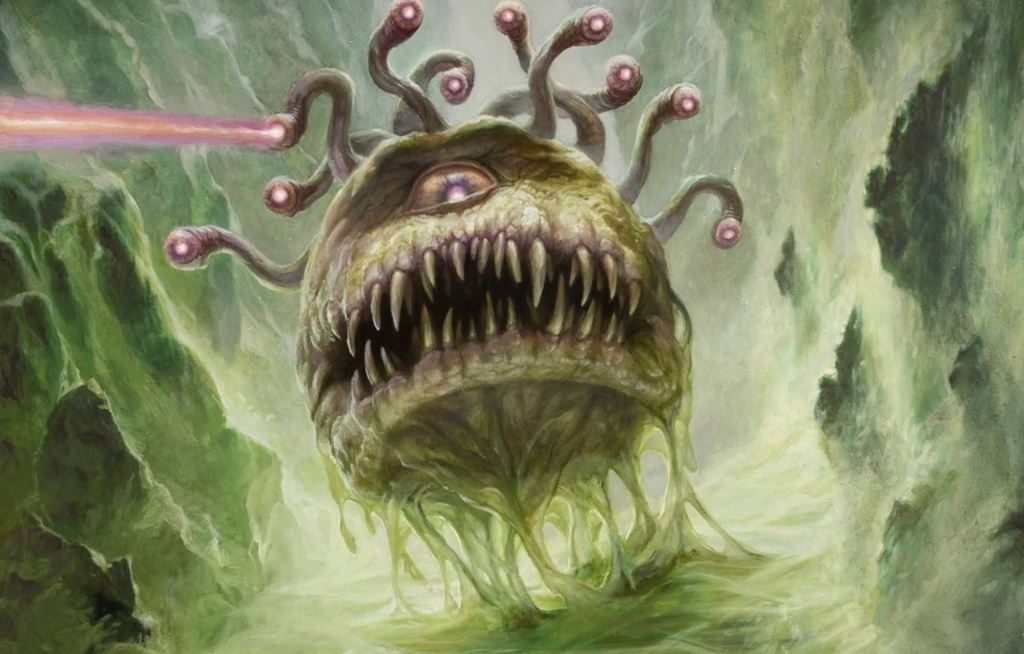
Beholders
Possibly the most well-known D&D creature is the Beholder: a fleshy, bulbous thing with way too damn many eyes. Depending on the subspecies — there are dozens of them, including an Eyeball cutie wizards use as a familiar — it can have as many as eleven eyestalks, in addition to a larger eye typically set in the center mass.
The beholder is the face of the franchise with a face only a mother could love. Now try to not think about how baby beholders are made. It’s an original monster with no historical or mythological genesis rather than the implications of the common phrase “beauty is in the eye of the beholder.” Created by Gygax’s friend, Terry Kuntz, it wound up on the cover of one of the earliest official D&D supplements, Greyhawk. The beholder straddles (wobbles?) the line between Gygax’s home games and the era when Dungeons & Dragons became a tabletop force. There it floats, watching it all, and stirring itself to fight with a variety of different abilities, one for each unblinking eye.
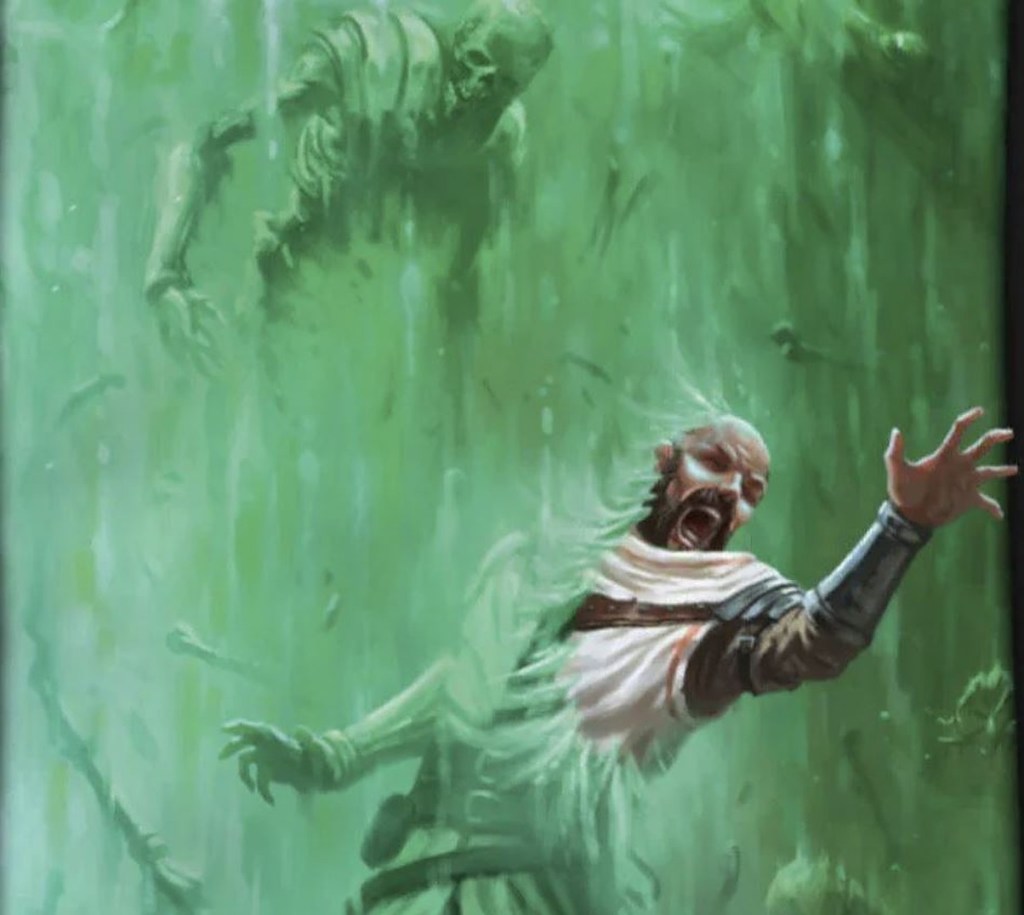
Gelatinous Cube
The Gelatinous Cube is another Gygax original. It’s a geometric ooze vaguely inspired by amoebae whose critics typically miss the point. Yes, they’re slow and stupid, but the cubes developed to fit into, and then reshape themselves inside of, standard dungeon corridors. This makes them not just an annoyance, but a great way to lose a favorite piece of gear. Or your life.
The ooey-gooey cube is a type of slime monster, a mindless predator that’s also many an evil wizard’s Roomba. Of course, it won’t just mop up last night’s dinner scraps, but unwanted dinner guests as well. Its translucency adds an additional layer of threat to this consuming box of walking Jell-O. If you don’t manage to spot it in time, your adventurer winds up paralyzed, doomed to be melted down into goopy nutrients, while your grandpa’s favorite sword ends up on aspic display until a luckier warrior wins it away. Efficient, aesthetic, and probably not lime-flavored, the gelatinous cube could be huggably squishy if it didn’t try to eat everyone.
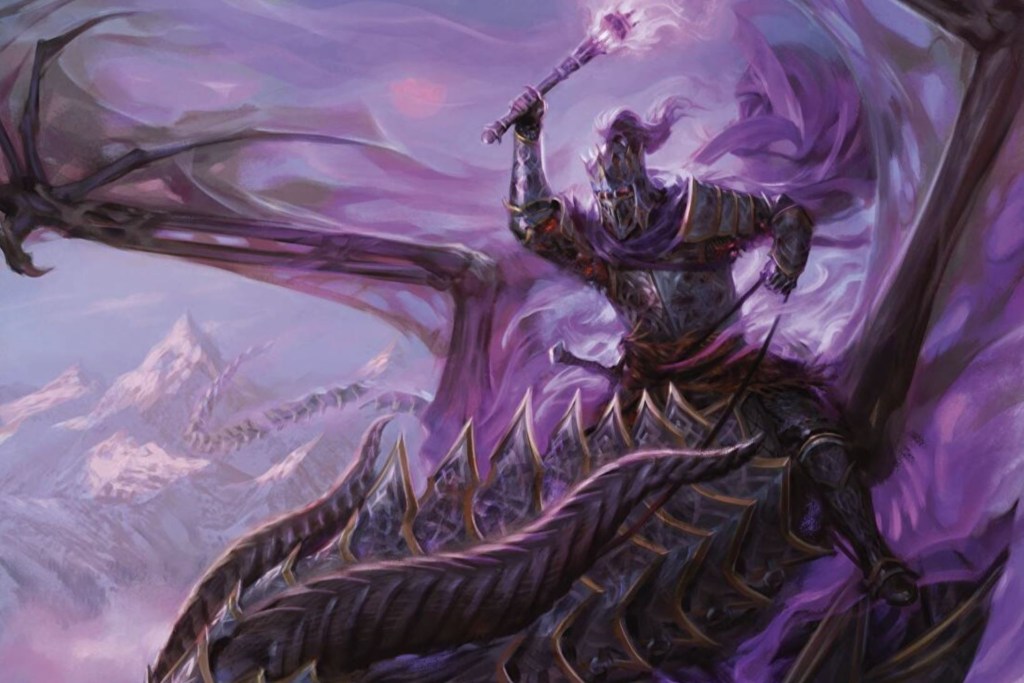
Lord Soth
Move over, Gregor Clegane. The infamous death knight Lord Soth, the Knight of the Black Rose, is a much cooler version of the relentless dead guy with a fly set of armor.
The idea of death knights has long been a fantasy staple. A beefed-up version of the common skeletal warrior, with lingering intelligence and some screwed-up notions of honor? What not to love? However, Lord Soth took the considerable potential of that concept to the highest extremes.
Lord Soth is from the Dragonlance setting, famously known for Raistlin Majere, Tanis Half-Elven, and a cataclysmic clash of dragons. Soth is a disgraced Solamnic Knight with a touch of Bluebeard backstory. He used to be a man of honor, but he confused lust with love and power with righteousness. The results led to the death of his entire family, and Soth was cursed by his Elf wife’s dying words. For a time he was used in the gothic Ravenloft setting, but D&D magic means he’s long since returned to Krynn. Found everywhere from spinoff novels to the Death Knights of Krynn Gold Box video game, he proves being bad is cool (so long as you’re styling).
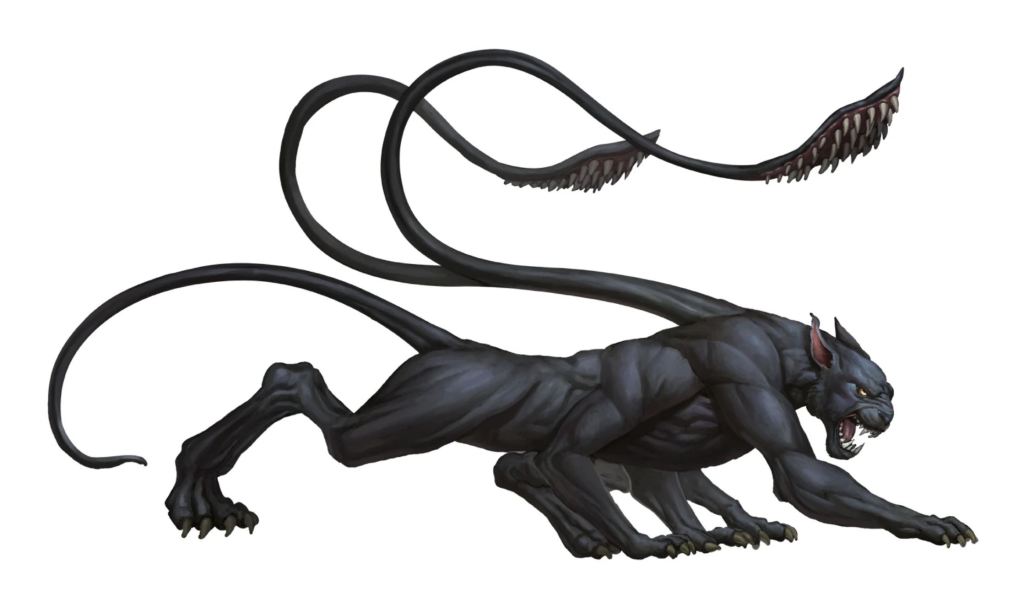
Displacer Beasts
What’s better than a cat? Puppies, maybe, if that’s your preference. But the point is, cats are great, and fantasy cats are even better (even if they’re trying to rip off your face). That makes the Displacer Beast one of my favorite monsters in D&D.
With their dark-furred bodies built like a panther, these lithe killers also have an extra pair of legs on their torsos and a set of tentacles that grew from their backs. Obligate predators, they like to hunt in packs and prefer to target unwary mages when it’s human prey on the menu. An innate gift for magic lets them leave an illusory shadow, making it hard to target a Displacer Beast’s actual location.
They’re also smarter than most critters. Though rarely communicative, a Displacer Beast trained from a young age can be a deadly guard cat or mount for wizards and Drow priestesses. Best of all, they come kitten-sized on a crossover card between the Baldur’s Gate campaign setting and Magic: The Gathering. Who’s a snuggly little murder kitty?
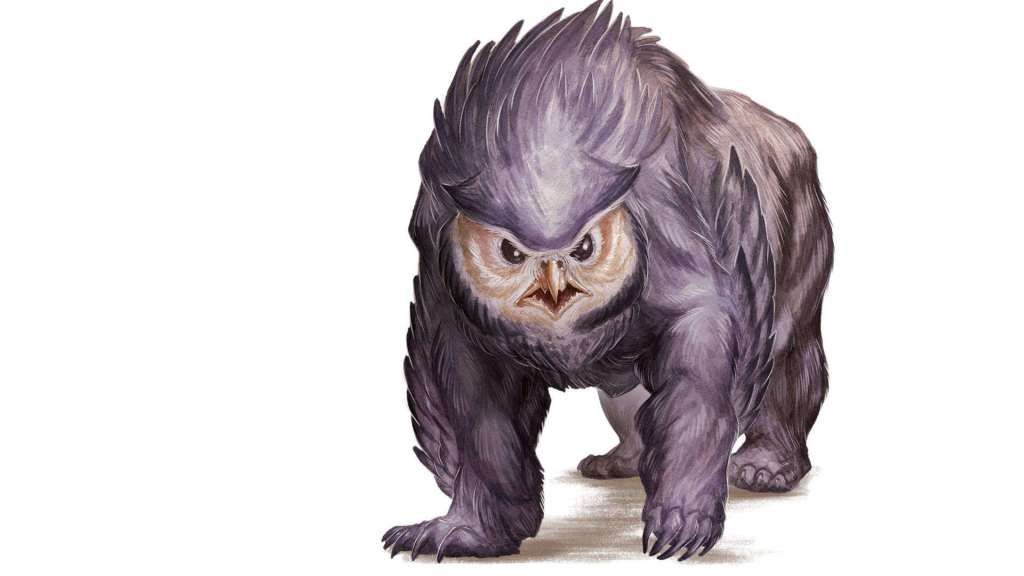
Owlbears
The Owlbear is our second cutie who’d happily kill us with a murderous hug and a peck of its sharp beak. Another Gygax original, the genesis of the Owlbear can be traced back to a pack of silly plastic “dinosaurs.” I’m emphasizing that word because the figurines Gygax was inspired by were actually hilariously dodgy Hong Kong imports. Many of the figures weren’t real dinosaurs, but kaiju-inspired… things. The first Owlbear looked like Big Bird with a tonsure haircut. It would take decades for this beloved monstrosity to perfect its lumbering shape, its feathery-fur body, and big chompy pecker. Stop laughing. You find a good synonym for “beak.”
The Owlbear is so distinctive yet malleable that it’s grown beyond its D&D origins and become another franchise’s fave, too. The Warcraft universe calls these guys Wildkin, with a shapeshifter form known as Moonkin that is available to Druid players who favor magical attacks. It’s a gimmick that seems to have come back around, as the D&D Druid class recently got a rules update that allows them to shapeshift into an Owlbear. Interestingly, we see the Druid in the Honor Among Thieves trailer transform into an Owlbear as well.
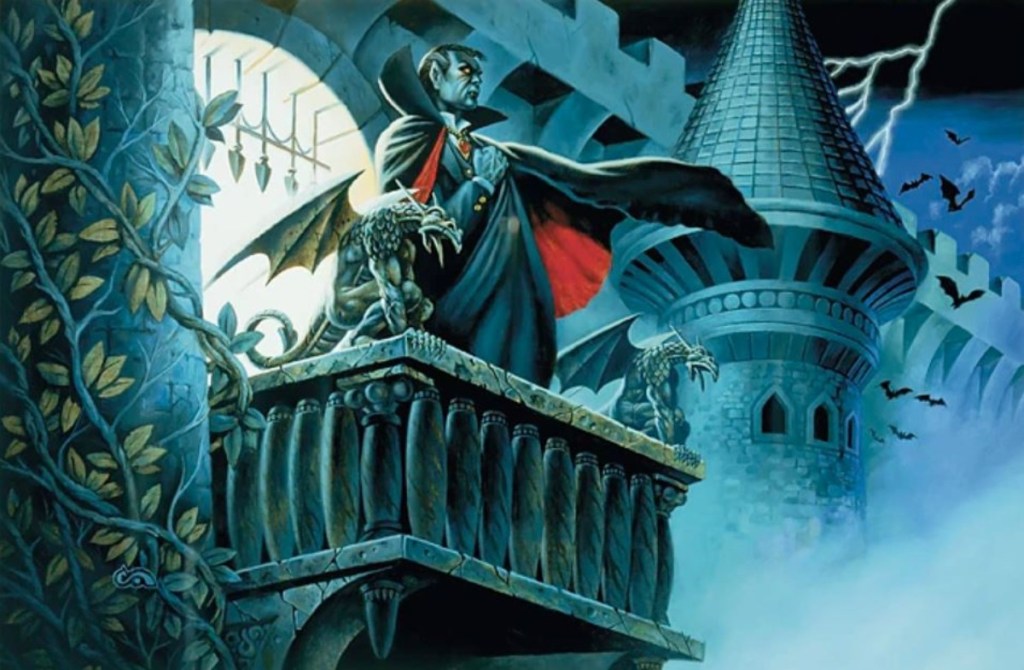
Count Strahd von Zarovich
No fantasy campaign setting is complete without a charcuterie plate of familiar monster movie baddies. Zombies, mummies, and werewolves frequently turn up in D&D, but at the top of that mountain of genre tropes are the vampire lords powerful enough to organize them into monstrous armies. Even amongst the vampires, though, one bloodsucker has made a name for himself that is too terrible to ignore.
Count Strahd rules over the Ravenloft D&D setting: a world of gothic nightmares popular with DMs who want to build an atmosphere of real fear for their players. Strahd is built from the standard Dracula archetype, but with a few unique twists. The object of his ruinous desire was his brother’s wife rather than his fiancé of some city lad, and his own personal Van Helsing is his vampiric mentor (Jander Sunstar, a fallen Elf).
Oh, and unlike Dracula, this intense bastard continues to thrive in the darkness of his realm. The best outcome for a campaign that involves his machinations usually involves escaping the plane of Ravenloft entirely, scattering the dark lord’s plans into ashes as they flee. Of all the big-name villains in D&D, Strahd is too powerful, and far too intriguing, to ever just kill.
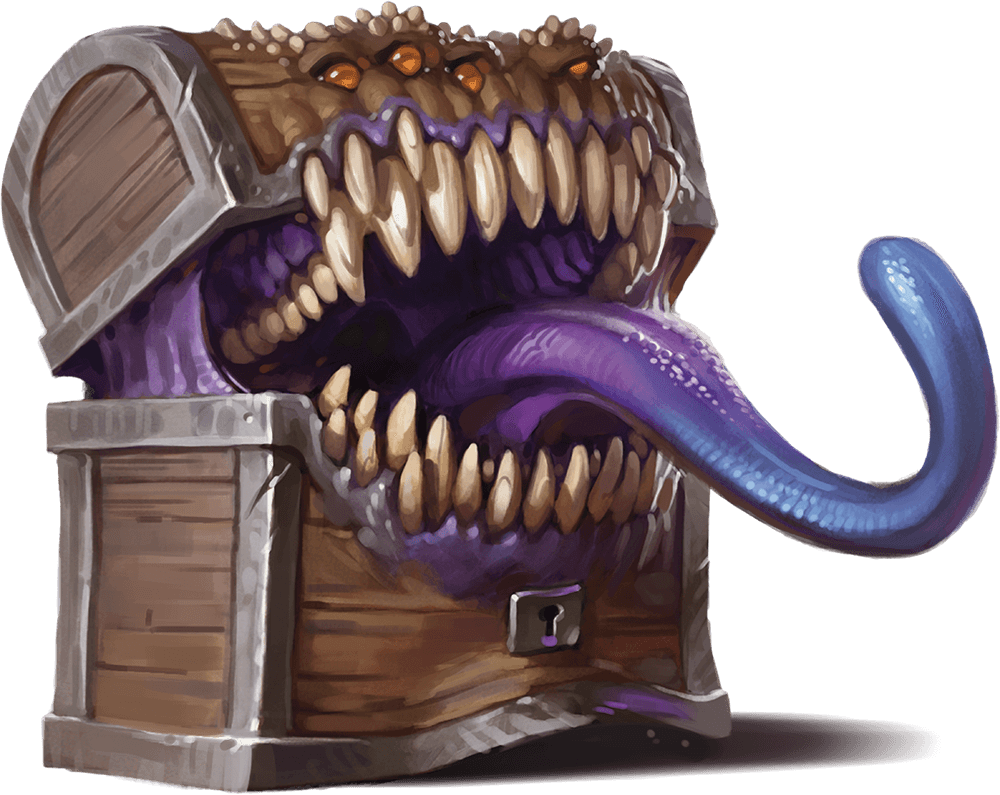
Mimics
Love them or hate them (okay, I hate the suckers), the Mimic’s been a mainstay of the D&D campaign ever since the original Monster Manual dropped in 1977. The worst thing Gary Gygax ever unleashed on gaming, these jump-scare sons of benches (I’ll pause for your groans) turn the joyous discovery of a wooden treasure chest into a quite possibly fatal encounter for unwary adventurers.
A good DM knows exactly where to place one, too. Your group’s tired from goblin assaults. You’ve been in the dungeon for hours. Your Paladin is on their last hit point and the Cleric is tapped out. All you need is a potion, a healing scroll, or…something. And oh, blessed day, treasure appears in your path just before the ambush you know is coming in the next room. Except the ambush is already here.
The mimic has snuck its way into countless universes since, from the tabletop to the console, and rarely are they as cute as their Dragon Quest variations. The FromSoftware iterations are particularly virulent. D&D fan Hidetaka Miyazaki and his team have the evil DM brains needed to turn these bastards into their best, worst selves. They only get the drop on you if you don’t pay attention, but they’re also carrying loot too good to pass up.
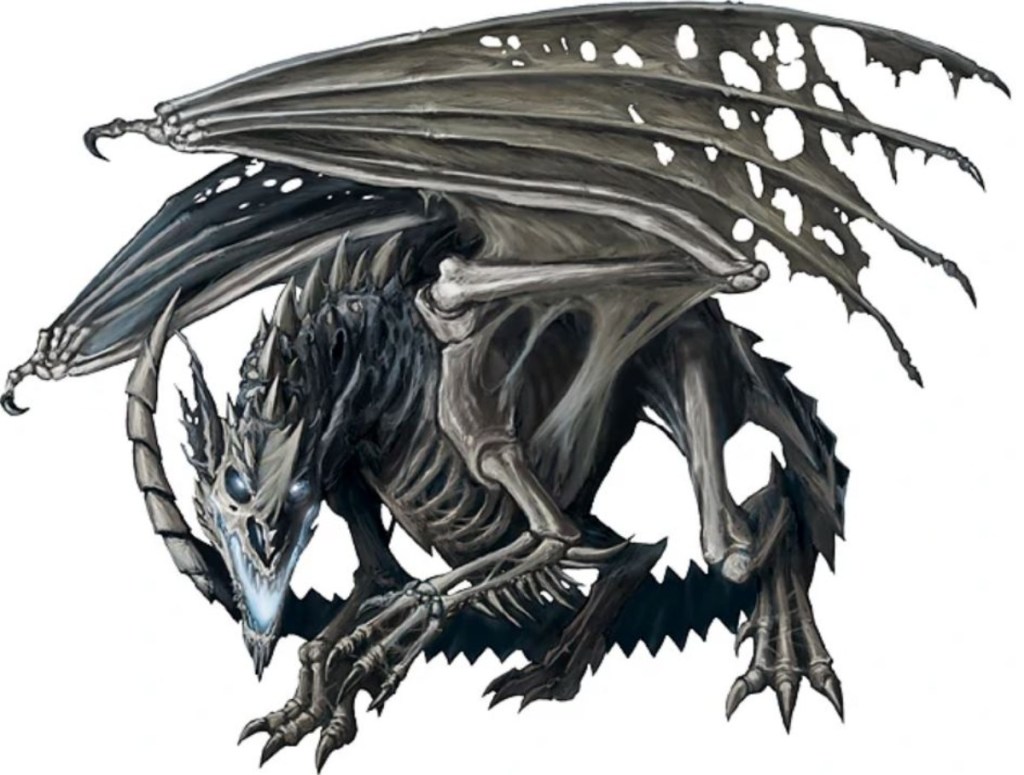
Dracolich
Listen, dragons are a given in fantasy. They’re awesome, no doubt. But it takes a lot to make a dragon into something fresh. The Dracolich (an undead, nearly indestructible skeleton dragon with all the powers they had in life, plus the abilities of a lich), managed that feat handily for D&D back in 1986 when the Cult of the Dragon was introduced to readers of Dragon Magazine.
Fortunately for players, Dracoliches are meant to be rare, with the process to create one a gigantic hassle for anyone but the most insistent, demented of dragons. Unfortunately, that means that you’re in for a bad time whenever one is found.
Rendered immortal, with nothing left to give them pleasure except collecting more power and wealth, a Dracolich can be driven out of its current skeleton and forced to seek another lacertian body. However, it can’t be killed unless you can find its phylactery: a magical widget that stores its soul. Any lich worth its salt is going to do the most to hide it from hunters. On the bright side, imagine winning a temporary victory over a Dracolich, only to find out this big bad had to resort to claiming the body of some kid’s dead pet gecko.
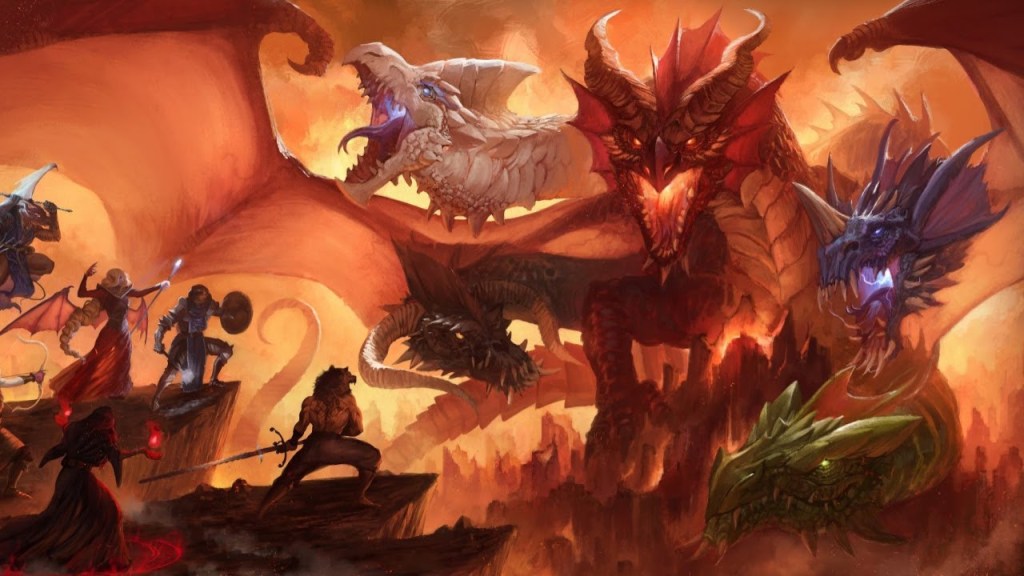
Tiamat
There’s one other way to keep dragons new and exciting, and that’s meeting the Mother Goddess of all evil dragons.
Her five heads represent the individual dragon species under her banner: the Blues, the Reds, the Greens, the Blacks, and the Whites. Each of her noggins work independently, with the full power of its type available to it. Determined to be her worst self at any opportunity, Tiamat embodies the ugliest aspects of dragons. She demands only the richest of gifts, proud and terrible in her manner, and utterly disinterested in the worth of mortal folk. Naturally, this means she has one of the most devoted cult followings in the Faerun setting, with legions of evil clerics intent on pleasing her by gathering wealth, power, and the lives of all the other gods by any means necessary.
She’s one of D&D’s most recognizable big bads and a fond memory for Gen X kids that grew up watching the old Dungeons & Dragons cartoons. Unfortunately, she didn’t care for the series’ child-like heroes all that much and set them up for a near-villainous turn in one of the gnarliest episodes of the series.

Demogorgon
The Demogorgon was a hell of a threat to D&D players well before Stranger Things gripped former ‘80s kids by the throat. Interestingly, there are not a lot of similarities between the show’s version of the monster and the one Gygax introduced in the 1976 Eldritch Wizardry supplement. Instead, Eleven tries to identify the thing that’s been hunting Will in the Upside Down using the critter’s D&D token, and thus a connection was made.
The actual fantasy Demogorgon isn’t much nicer. It’s a double-headed demon lord with the physical features of both great apes and serpents. It sounds goofy to say its facial features borrow from the colorful mandrill ape, but its various official monster arts remind us why real-life apes aren’t creatures we should idly play with.
Fortunately, the powerful Demogorgon has a big weakness: its chiral duality which gives this demon its own worst enemy. Each head has its own personality, and they don’t have the same ultimate motives. Playing its desires against itself is the second-best plan for most adventurers. Not being in its presence at all is the best plan.
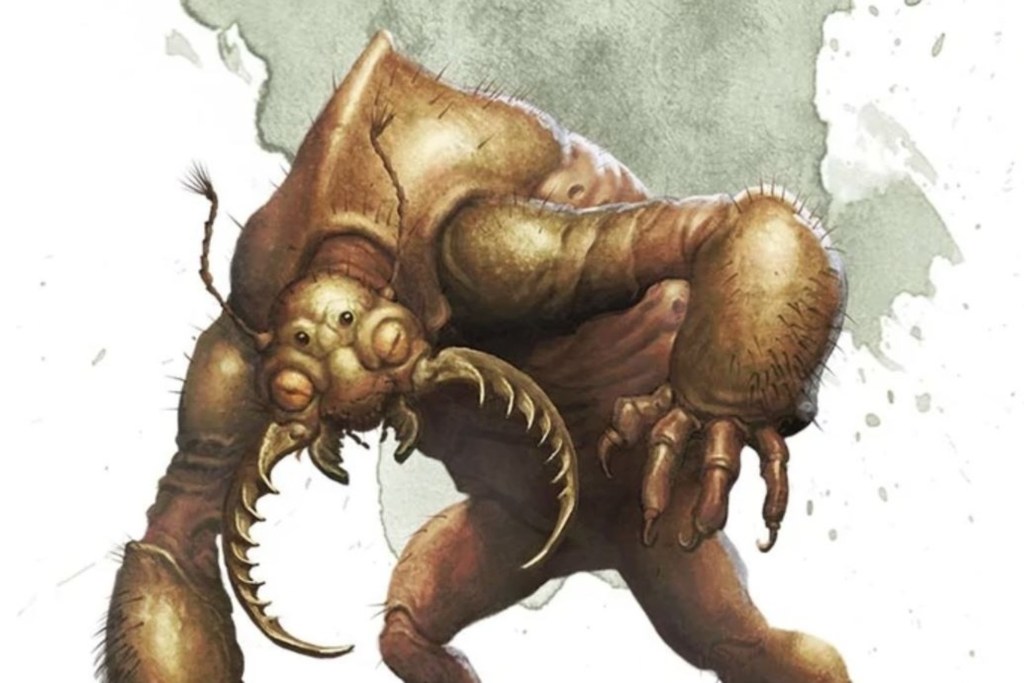
Umber Hulks
Umber Hulks are a fave for some of us who have more experience with the D&D video games than the tabletop original. Popping up in the original Baldur’s Gate and even the old Gold Box CRPGs, these deceptive brutes make for an interesting threat.
They’re the Gorons of D&D; tunnelers and miners who spend their mostly solitary lives in the dark. They’re happy to let other races assume they’re unintelligent, and their bug-like faces, heavy carapaces, and overall alien appearance help them in selling the illusion. However, they’re actually an ancient race of abominations, possibly as old as the cosmos itself. After the first hundred millennia, what do you have left to prove to anyone?
Umber Hulks don’t need or care to bother with magic, but they do have an intrinsic ability to confuse anyone that gazes upon the set of smaller eyes set high up on the forehead. Their durability and sheer will do the rest of the work. While dangerous in a fight, these guys aren’t automatically hostile. Their attacks come when they’re hungry, and it’s even possible (if rare) to see them used as a guard force by enterprising trainers.
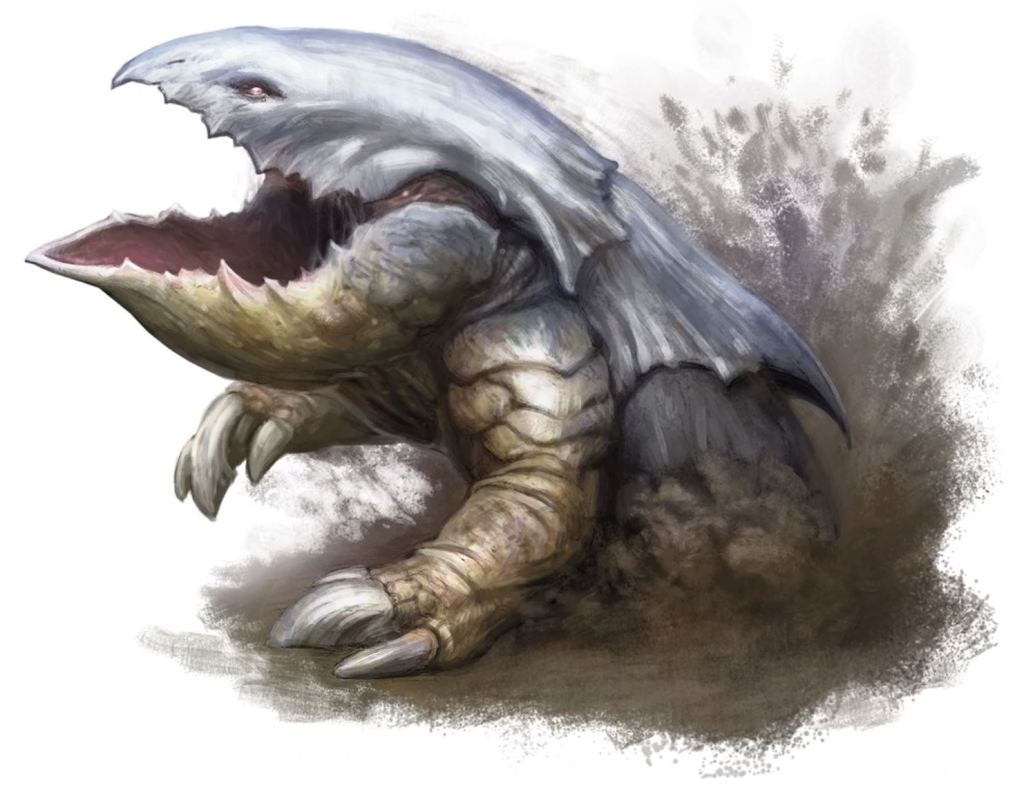
Bulette
Pronounced with a little European sizzle on the back (booh-lay), the Bulette is yet another critter invented after playing with a bag of crappy plastic figurines. Tim Kask, one of Gygax’s friends, picked a critter out of the mix and gave it a story just in time for the first issue of Dragon to make it to press. Combining the durability of a tortoise with the savage hunting capabilities of a shark, these chitinous critters are another great tool for a DM looking to create a hell of a jump scare.
It took the 1977 AD&D Monster Manual to give the Bulette its signature sharklike trait. Now capable of burrowing, these hungry, hungry shark hippos will break through the ground with a hard dorsal fin to attack prey. There’s no other warning that one is in the vicinity, and with speed and viciousness on its side, the Bulette is a surefire way to watch your campaign go wrong fast. Fortunately, a Bulette encounter is usually a solo affair. Territorial, perpetually cranky, and big eaters, they have no problems with munching down on their own kind.
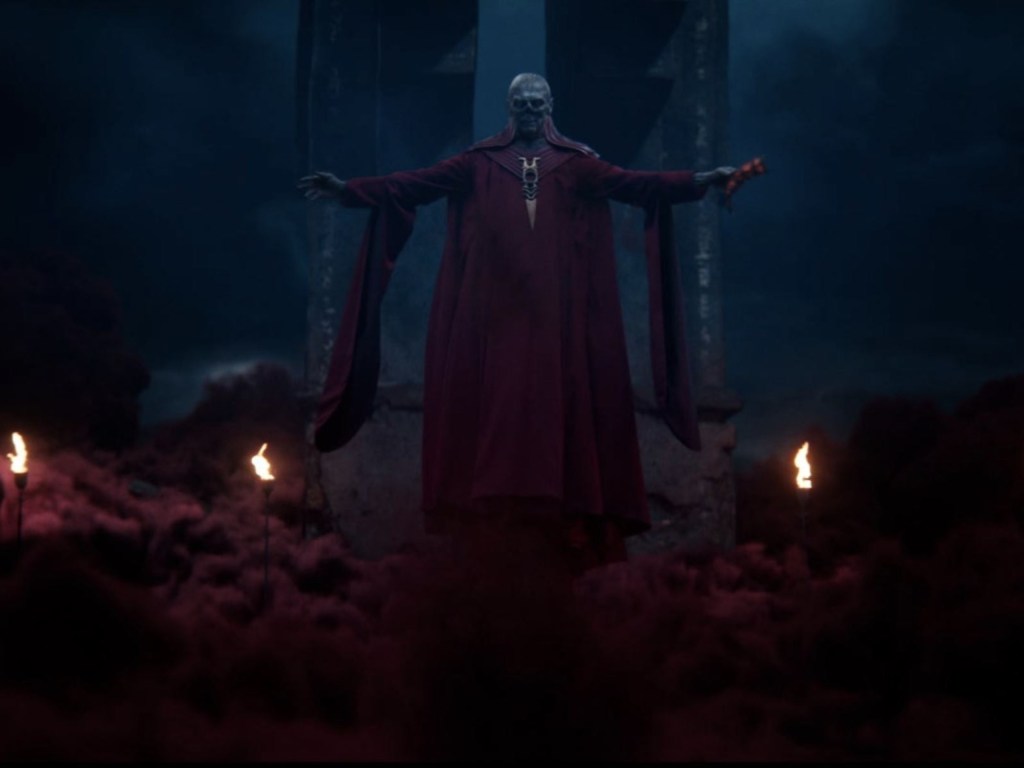
Szass Tam
A powerful wizard in life, apocalyptically horrible in death, Szass Tam isn’t just one of D&D’s signature baddies (and the villain of the new movie). He’s a crash course in how to accomplish the highest necromantic arts, the politics of the Sword Coast, and the power of the Red Wizards of Thay all in one skeletal blow. He’s even known to fans of Baldur’s Gate II: Enhanced Edition, where he has a secretive interest in the local gladiator arena.
Szass was an accomplished necromancer when one of his military campaigns ran into trouble. His soul was so entwined with the dark energies he favored that, when he was mortally wounded on the battlefield, he rose as a lich without any extra preparation. He kept his role as a Zulkir (a member of the council of eight Red Wizards that ruled the country of Thay from the shadows), but that wasn’t enough to satisfy him. Taking advantage of the infighting and distrust that was probably Thay’s biggest export, he installed himself as the High Regent in the midst of a magical plague. There he remains, a living landmark to the dark side of magic, and the heart of countless deadly plots that threaten the entire realm.
